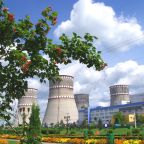Search results
If an incident or accident occurs at a nuclear installation in Germany or abroad, the GRS Emergency Centre will spring into action. Up to 60 experts will then gather at the Emergency Centre in Cologne and at our Garching location to inform the Federal Government about the situation at the affected plant.

More than 30 pressurised water reactors of the Russian or Soviet VVER (water-water-energy reactor) type are currently in operation in Eastern and Central Europe, and several new plants are under construction. Mochovce-3, for example, started commercial operation in Slovakia in October 2023. Not least the war in Ukraine and the fact that the Zaporizhzhya nuclear power plant (NPP) became the theatre of war have shown that technical knowledge about this type of plant is still needed in Germany too, e.g. to be able to assess any risks. Experts at GRS are therefore involved in numerous research projects on VVER reactors, including international ones.
GRS experts develop computational code that can be used to simulate muon radiographic images in order to test the suitability of the method for examining storage casks for spent fuel assemblies

On 11 March 2011, the most severe earthquake since records began in Japan occurred off the east coast of the Japanese main island of Honshū. The quake and especially the resulting tsunami devastated large areas of eastern Japan and caused an enormous number of casualties: Ten years after the tragedy, various official statistics count around 20,000 fatalities, and in December 2020, there were more than 2,500 people still considered missing. It is estimated that around one million buildings were destroyed or damaged.
The containment of a nuclear power plant is the final of several barriers to retain radioactive substances. It consists of a gas-tight steel shell enclosing the reactor and a thick concrete shell designed to protect the steel shell from external hazards. In the event of an accident, coolant escaping from the cooling system, i.e. radioactively contaminated water and steam, is collected inside the containment. However, the retaining function of the containment may put be at risk by an accident.
To ensure the safe operation of technical installations such as nuclear power plants (NPPs), it is important to continuously identify and analyse possible risk factors. In addition to technical safety, the so-called human factor, i.e. human influence and contribution, is of crucial importance for the safe operation of installations. Human-organisational aspects are therefore an aspect of safety research that should not be underestimated. In a recent study, GRS scientists have identified organisational factors that can have a negative influence on plant safety. These are specific characteristics that affect the structure of the organisation (organisational structure), the organisation of activities and processes (process organisation), and the corporate culture.
M. Röwekamp
M. Röwekamp, H.-P. Berg (BfS)
GRS, ISTec, nse